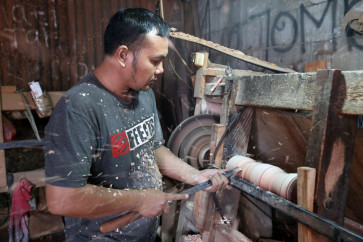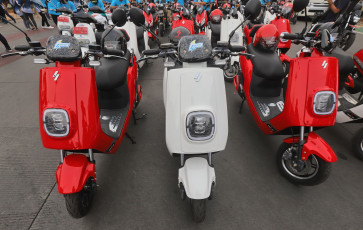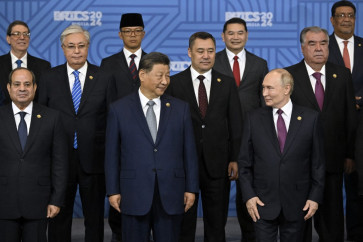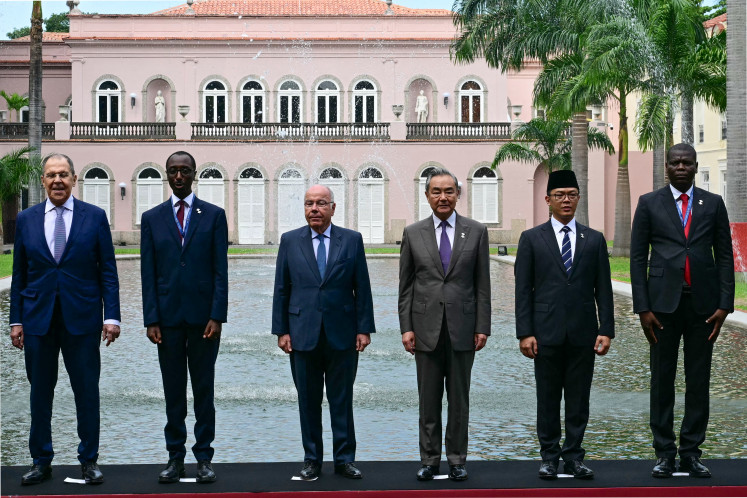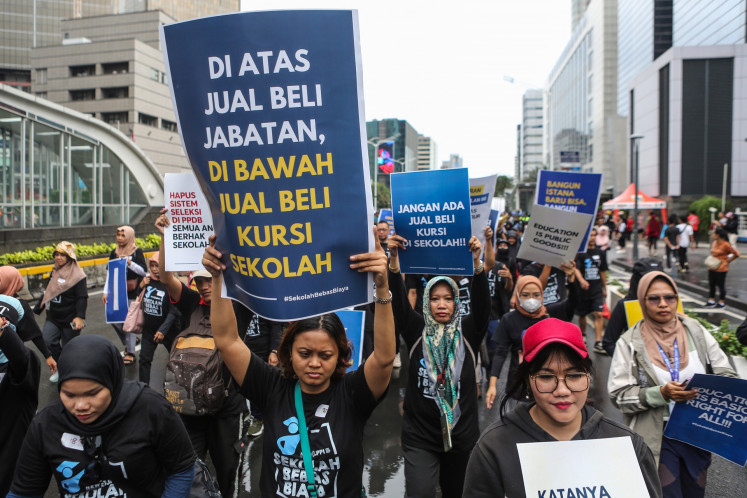In Asmat, searching for the lost rockefeller
Michael Rockefellerâs disappearance in Papua in 1961 was an event that seemed almost âscriptedâ to US-based author and journalist Carl Hoffman, who was in Ubud last week for the Ubud Writers and Readers Festival
Change text size
Gift Premium Articles
to Anyone

Michael Rockefeller's disappearance in Papua in 1961 was an event that seemed almost 'scripted' to US-based author and journalist Carl Hoffman, who was in Ubud last week for the Ubud Writers and Readers Festival.
'It is the story of the dying days of colonialism, the rise of interest in tribal primitive arts. Events were happening and conspiring, yet the players were not aware of this,' says Hoffman of the disappearance and presumed death of the 23-year-old Rockefeller, who was on an arts-collection journey deep into the heart of what was once head-hunting country.
In 2012 Hoffman traced the mystery to its believed source in Asmat territory in Papua, an area bound by mountains, swamp and sea, in the hope of discovering the fate of the son of then-New York governor and one of the world's wealthiest people, Nelson Rockefeller.
What Hoffman found instead was that the geography of isolated Asmat echo the closed society of its peoples, a jungle and swamp protecting secrets that should never be told.
'Nelson Rockefeller opened the Metropolitan Museum of Art in 1957 and Michael was a trustee at just 19 years of age. On the other side of the world the men of Otsjanep and Omadesep were engaged in a violent battle and really that was one of the last Asmat raids [between villages].
'One hundred and twelve men were murdered ' these were some of the world's finest tribal artists and it was this [inter-village] raid that led Dutch colonial officer Max Lapre's raid on Otsjanep where he killed five people,' says Hoffman of the genesis he believes led to the disappearance of Michael Rockefeller three years later.
The 23-year-old's boat had capsized in heavy seas off the Asmat coast. Rather than staying with the boat along with travel companion Rene Wassing, Rockefeller strapped a couple of empty jerricans to his body for ballast and swam the 17 kilometers to shore.
'It was the men who happened to be relatives of those killed by Lapre three years earlier who came across Michael on the river confluence and shore break,' says Hoffman. Rockefeller was never seen again.
Hoffman's attempt to trace the events and explain once and for all just what happened to Rockefeller took him deep into Dutch Colonial archives where previously unseen material brought to life the convergence of circumstances the author believes were the forces that led to Michael's presumed death along the mud-banked shores of Asmat.
'I was haunted by the idea of someone like me going to a distant place and disappearing. I think we are fascinated by mysteries because they are so disturbing,' says Hoffman.
The author also traveled to Asmat. His first journey to the territory, while frustrating, confirmed his belief in the story and with the rich material coming from his research assistant in Holland and Tenerife, Hoffman got down '40,- to 50,000 words, but it didn't feel right. I felt it was shallow'.
Hoffman studied Indonesian then headed back to Asmat to stay in the village of Pirien with local man Kokai, adjacent to Otsjanep.
'I wanted to live alone in the village. I felt that was the only way I could get to know these people. To speak to Kokai and other Asmat was difficult in the beginning, but over time I became surprised at the conversations we had,' says Hoffman, adding Asmat is a 'very difficult place for a Westerner. And difficult for many reasons. It is a world full of secrets and layers'.
Dropped off in Pirien by boat, the author remembers thinking 'what do I do now?'
'Every hour was like a day, every day like a week. In the jungle in a mud village. You can't go anywhere; it's impenetrable jungle, I could not just walk off. All there was to do was sit and smoke. I did not control anything, I just had to accept,' says Hoffman. 'I learned there can be profound cultural differences between people that are not as easily bridged as we believe.'
He had entered a world of extremes where people were explosively emotional and expressive.
'Literal extremes of balance, life and death. On top of that there is very little food in Asmat; a place of abundance and scarcity. So it is profoundly different, all notions of time, savings, how you manage your life; you know the time if it's light or dark, so it is profoundly different,' says Hoffman of the guardians of the secret surrounding Rockefeller's disappearance.
=========
Savage Harvest: A Tale of Cannibals, Colonialism and Michael Rockefeller's Tragic Quest for Primitve Art. Carl Hoffman, 336 pages (Harper Collins)

